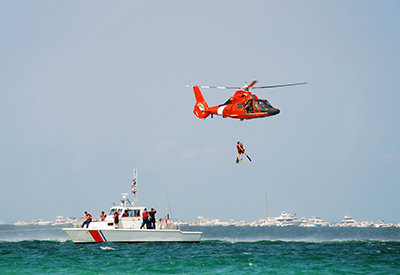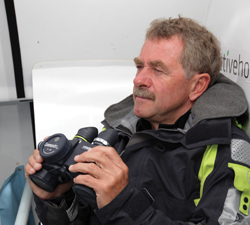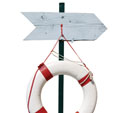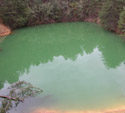Fire Systems
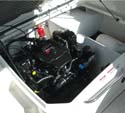
 Engine room fires are mercifully rare, but every so often, one does occur. The engine room is the most likely place on your boat for a fire to get started and if the fire breaks out while you are out on the water, the lives of everyone on board are at risk.
Engine room fires are mercifully rare, but every so often, one does occur. The engine room is the most likely place on your boat for a fire to get started and if the fire breaks out while you are out on the water, the lives of everyone on board are at risk.
Specifically, the US Coast Guard estimates that 90% of all fires on a boat occur in the engine room. It is easy to see why. The engine room has the engines, the fuel and the electrical systems all in a confined area; this is also where the heat and vibration are generated. Screws, clamps and fittings are most likely to work loose in the engine room.
Then, a spill and a spark is all it takes.
If a fire occurs when the boat is unattended or in storage, the danger to human life may be less, but the property damage could be dramatically greater. Consider the liability if it’s your boat that initiates a fire that takes down a storage building of other yachts.
So, what does the Canadian Coast Guard require you to carry on board? Depending on the size of your vessel, you are required to have one of two classes of fire extinguishers under the Small Vessel Regulations: A Class B extinguisher for combustible liquids (such as gas and oil); and, a Class C extinguisher for electrical fires.
On your handheld fire extinguisher, the number before the letter on the extinguisher relates to its fire fighting effectiveness. For example, a 3B device will put out a larger fire than a 2B device. Although regulations specify Class BC, get an extinguisher with an ABC rating. That covers more potential problems.
The Canadian Coast Guard requirements for most pleasure craft are only for portable fire extinguishing systems. So, why would a person want to have a built-in system?
The key point is that the built-in system offers 24/7 unmanned protection. Remember that the US Coast Guard estimates that 90% of all fires on a boat occur in the engine room. The safest and fastest way to combat an engine room fire is with a fixed system.
As a boat writer and one of the Canadian Yachting powerboat reviewers, I regularly explore engine rooms on new yachts and just getting the hatch open and getting down to the engine room bilge can take several minutes.
A built-in system delivers the fastest response and will probably help to minimize property damage and human risk in the event of a fire. And yes, I know of at least one new boat that caught fire. “New” is no guarantee of safety.
Without a built-in system, when a fire is discovered, the boat captain or crew must first locate the portable extinguisher, move to the point of the fire, in the case of an engine room, open the hatch or doorway (which incidentally allows in more oxygen creating a larger fire), then point the dry chemical extinguisher at the base of the fire, discharge and hope for positive results.
Diesel fuel is safer to handle than gasoline but in all cases, opening the hatch when a fire is burning, will add enough new oxygen to create a real danger of explosion and high chance of human injury.
You may be surprised to learn that a built-in fire system is not required until the boat is over 65′ as well as being classed ‘inspected vessel’. Also, boats that carry passengers (such as charter fishing boats) are required to have a built-in system. But, common sense says that it is highly recommended that all boats with inboard or stern drives should have a fixed fire extinguisher system.
I just returned from doing a boat test on a new Sea Ray 210SD runabout. It has a built-in system and engine hatch sight glass as standard equipment. It just makes so much sense.
The built-in fire suppression systems can be activated either manually or automatically. All have a tank that can be located somewhere in the engine room area (according to the manufacturers specifications) and these extinguisher tanks automatically discharge their fire suppressant at a pre-set point. For instance, the Fireboy system automatically discharges when the temperature reaches 175 degrees.
The suppressant ‘smothers’ the fire with chemical or gas that will not support combustion. When the system discharges, it will also smother the running gasoline engine (as long as that is drawing its intake air from the engine room environment and not an outside intake). That is not true for diesel engines.
Diesels require an automatic engine shut down. A diesel will not automatically stall with the introduction of the fire extinguishants; a separate system is required to stop the diesel, otherwise it will simply consume the agent and continue running.
Some time ago, these built-in fire suppression systems used Halon gas but it was discovered that Halon was very damaging to the environment. The signing of the Montreal Protocol included the ban on Halon. It became effective in 1994. Fireboy elected to cease the sale of Halon systems at that time. Recycled Halon was allowed to be sold, but there was to be no new Halon manufacturing. Europe moved quickly to ban Halon, and in the USA, effective on January 1, 2007 new boats could not be equipped with recycled Halon systems either.
Understandably, refills of Halon fire extinguishers are no longer permitted. For more information, you can visit the www.tc.gc.ca web site.
Other substances were developed and now chlorotetraflkouroethane and heptaflouropropane are used instead; both chemicals are manufactured by DuPont Chemical. Chlorotetrafluorethane FE241 has an ozone depletion potential (ODP) of .02. FE241 is not permitted in Europe and several other countries. Fireboy reports that it is their understanding that in Canada, it is permitted since we have set a standard of under .05 for the ODP.
HFC-227ea Heptafluoropropane has an ozone depletion potential of zero. Additionally, HFC-227ea is approved for use in occupied/manned spaces. FE241 and HFC-227ea are non-corrosive and non-conductive. When the clean agent system discharges there is no residue, or powder substance to clean up. It does not affect electrical or mechanical equipment.
An alternative system uses ultra-fine, potassium-based aerosol. Space and weight requirements are minimal and, in many applications, the small size of systems like the Nautical Fire Suppression Stat-X aerosol generator makes them the only viable option. A low installation cost makes them an acceptable fire protection solution.
Another question is how to properly size a fixed fire extinguisher system. The answer is that the cubic volume of the protected space must be calculated (length x width x height). There can be no deductions for equipment or tanks, except as permitted in ABYC, section A-4. (Only boat builders may deduct fixed tanks in the protected space, proving they affix a label indicating they have calculated the space using this exception.)
Odds are that you’ll never experience an onboard fire. But, it doesn’t take much imagination to see the benefit of having a system on your boat!
SIDEBAR
Does a Fixed Fire Suppression System Cut Your Insurance Costs?
Given that installing a fixed fire suppression system in your boat is a significant expense, Canadian Yachting contacted Drew Robertson of Robertson and Robertson Yacht Insurance to learn if boat owners can save money by installing a fixed system.
Robertson answered by saying that, “Remember, most insurance policies require the boater to carry the minimum required fire extinguishers as set out in the regulations. A quick reference is in the Canadian Coast Guard Safe Boating guide. A few insurance companies do offer a discount if the boat has a Halon or other type of onboard fixed system.”
He added that, “If you do have a fixed system, it has to be properly maintained. If not maintained in good working order it will not satisfy federal regulations or the insurance company’s conditions that, in turn, could void the policy. It’s a very good idea to go for an onboard system. It’s a substantial increase in both personal safety and the security of your vessel. That is the real benefit.”

